Will the Corvair kill you?
If automotive-safety advocate Ralph Nader is right, what I’m about do has an uncomfortably high percentage of ending in disaster. I’m in a 1960 Chevrolet Corvair, one with a manual transmission and just 39,672 miles on the clock. An expanse of wide concrete runway—a portion of Detroit’s Coleman Young Airport—stretches out ahead. My intention is to accelerate to a modest speed and then abruptly turn the wheel back and forth to see what the car will do.
Despite decades of experience racing and testing cars, I’m nervous. In his 1965 book, Unsafe at Any Speed, Nader called the Corvair “the one-car accident.” He wrote that a design flaw in the rear suspension made the car likely to flip over when driven in abrupt maneuvers, like, say, avoiding a ball that suddenly rolled into the street. The book was a bestseller and has been inextricably linked to the Corvair ever since.
I’ve always wondered if Nader’s claims were fair. Peter Koehler, a former GM engineer who’s owned dozens of Corvairs, including the one I’m about to test, claims the Corvair wasn’t inherently flawed, it was just different. In car circles, Nader is credited with effectively killing Chevy’s small car. Brock Yates, the longtime Car and Driver columnist who wielded a wonderfully sharp pen, regularly vilified Nader. Yates lumped Nader into a group he referred to as the “Safety Nazis.” Nader’s book helped usher in a host of emissions and safety regulations that hobbled performance. The muscle cars of the rah-rah ’60s gave way to the Pintos, Vegas, and 55-mph speed limit of the ’70s. Yates the provocateur protested by starting the Cannonball Run.
To me, a car-obsessed adolescent born five years after Nader’s famous book, Yates’s diatribes and stunts were gospel. When I finally got around to actually reading Nader’s book in the 1990s, however, the car companies had long since engineered around the regulations. Horsepower was back and climbing. The death rate had fallen from 5.3 deaths per 100 million miles traveled in 1965 to 1.7 in 1995.
I was surprised to find that the Corvair was just one chapter of Unsafe at Any Speed and also that much of Nader’s outrage made some sense. He wrote about dashboards freckled with sharp knobs, smog-choking Los Angeles, and the wisdom of seatbelts. While I vehemently endorse the checks and balances that healthy debate provides, Nader didn’t seem the crazed zealot I’d read about. Perhaps my softer stance is simply because I wasn’t around to watch the muscle car get neutered.
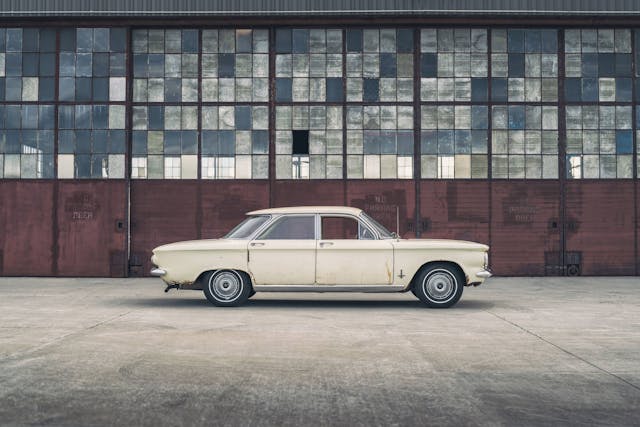
Yet I still wondered about the Corvair. Let’s forget about the controversy for a moment and consider the machine.
Gestated when General Motors was the undisputed king of carmakers, with over 50 percent of the U.S. car market, the Corvair was GM’s attempt to anticipate the future. It was a compact car but cleverly engineered to maintain interior space thanks to an air-cooled flat-six engine in the rear. In short, the 1960 Corvair was a complete rethink of the automobile and three years ahead of the Porsche 911.
GM bet big on the car with a whole family of body styles, including a sedan, a fetching coupe, convertible, wagon, van, and pickup. If Elon Musk had been behind it, he would have been called a genius. Today, these innovative and interesting cars are classic-car bargains, with solid, driver-quality examples available for 20 grand or less.
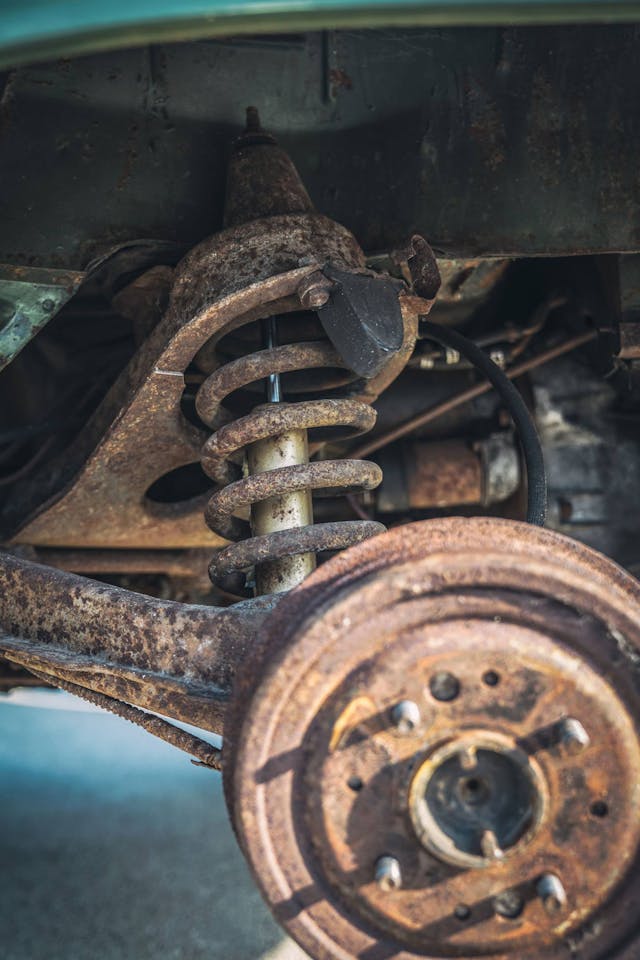
The Corvair was a revelation when compared to the lumbering oafs of the day. But its Achilles’ heel was that rear suspension, which was designed with economy in mind and was similar to the setup on the VW Beetle. A pair of short halfshafts connected the wheels to the frame-mounted differential. Only the inboard ends of the shafts could articulate, so as the suspension compressed or extended, the wheels tilted at extreme angles. This had the effect of dramatically reducing the rubber on the road. In an aggressive turn, the rear end tended to lose traction before the front, causing oversteer, or fishtailing.
That wasn’t all, however. There was a chance, a slim one, that the outside rear wheel could tuck in under the body and potentially trip the car into a rollover. These effects were further exasperated when owners failed to heed the Corvair’s unconventional recommended tire pressures: 15 psi in the front and 26 psi in the rear.
As I drive around the runway, gingerly at first to get a feel for the car, I’m shocked at how small and agile it feels. There’s no power steering yet the wheel doesn’t require much more effort than a modern car, even at parking-lot speeds. The same goes for the brakes. The suspension is soft, but compared to my 1955 Ford Country Squire, the oldest car in my fleet, the Corvair is a Ferrari. It’s fun.

In addition to Koehler, retired Chevrolet engineer Jim Musser is on hand. Musser spent his career in the research and development department. He worked on improving the Corvair and also prepared the defense for the court cases. He eventually succeeded Frank Winchell as the head of R&D. I gut-checked my plan with him, and he replied that race drivers of the day actually liked the Corvair. To make sure my test Corvair was as representative as possible, Coker Tire supplied a set of bias-ply tires, just like the car had in 1960.
I pick up speed and simulate a slalom course, driving back and forth across the center line. The harder I turn the more the back end feels light. Increasing the speed only exacerbates the effect, to the point where the back end clearly wants to make the turn faster than the front. To avoid spinning the car, I have to counter-steer almost immediately after initiating the turn. To racers, this behavior is known as “loose,” and it’s generally preferred to a front end that simply understeers, or plows. But I could see how the lightly trained driver might get into trouble.
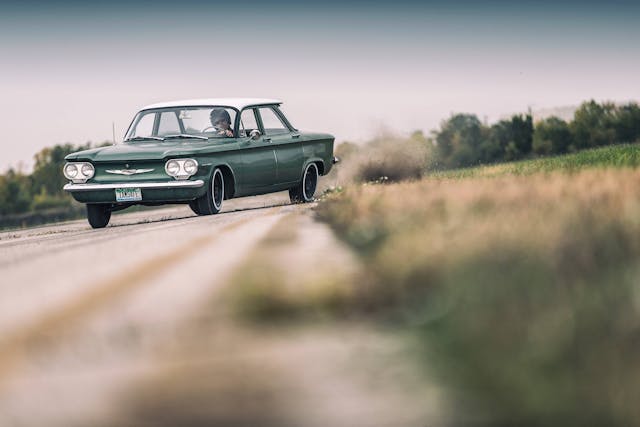
That was Nader’s point: The average driver wasn’t equipped to handle an over-steering car. Since a slalom isn’t very representative of normal driving, I navigate a course of varying turns, from simple right-angle bends to longer sweepers. At moderate speeds, everything’s fine. When I go fast enough to overcome the traction of the tires, however, the back end does its thing. On those skinny 1960s-era tires, speed is a relative term. Arcing through a corner at a velocity any modern car would scoff at, the Corvair starts to slide. The manual steering is slow by today’s standards so catching the thing requires huge movements of the wheel. The Corvair is a drift machine.
There’s a critical point to make here about oversteer that deserves mention. Bad oversteering cars snap out the rear end without warning. There’s no transition between equilibrium and chaos. I’ve raced cars with poorly set-up suspensions that had buckets of snap oversteer, and every one was a horror show. The Corvair’s behavior, however, is gradual. There’s ample warning of the rear-end movement and plenty of time to catch it. I gleefully slide the thing, hamming it up for the photographer, who stops me after I pass.
“How is that outside tire not buckling under the car?” he asks.
Through his camera’s viewfinder he points out extreme angles of the rear suspension. The inside rear wheel had lifted off the ground and the outside wheel was riding on the sidewall. We have a look at the rear tires and there are scuff marks right up to the whitewall, yet the tread of the tires looks pristine. Odd. We shrug it off and I do a few more passes. Only the engine’s lack of horsepower keeps me from hanging the rear end out continuously. I discover I can do U-turns simply by lifting off the gas and cranking over the steering wheel. The Corvair pivots around in not much more than the width of one lane. I could do this all day.
Real life, however, is never as ideal as a trained driver on a closed course in a perfectly prepared car. Let’s imagine someone misjudges a turn and enters it too fast. Perhaps this person hasn’t correctly maintained the tire pressures. Then what? I’d wager that the car’s going to spin. Is that worse than the alternative? Say another driver does the same thing in a 1960 Chevy Impala. The Impala probably wouldn’t spin but instead just simply not make the turn at all.
Since every situation is unique, it’s impossible to say which outcome is preferable. Between the two, however, the more agile Corvair probably has the better chance of avoiding that ball that rolled into the street.
In 1971, the U.S. Department of Transportation tested the original Corvair alongside competitive cars and determined that it was not especially dangerous. By then the Corvair had been out of production for two years and the affair was mostly over. And it had not been pretty. In addition to the rash of product liability lawsuits, Nader successfully sued GM for invasion of privacy in 1966, after the company had him followed. This had the effect of further publicizing Unsafe at Any Speed.
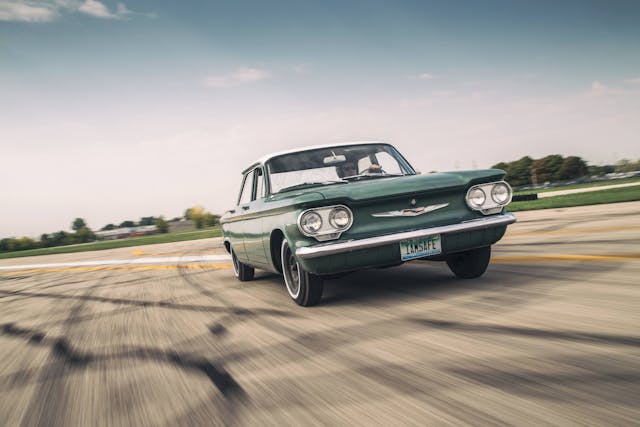
The pity of it all is the black eye on what was and is an interesting car. To me—and undoubtedly to Corvair enthusiasts—the history is part of the appeal. Every conversation with Musser or Koehler yielded another interesting layer.
Here’s one: In 1962, during the first Corvair lawsuit—three years before Nader’s book—two of history’s most accomplished racing drivers, Sir Stirling Moss and Juan Manuel Fangio, took the stand to defend the car. Another: The Corvair helped cement the relationship between Chevrolet and Jim Hall, the Texas builder of the Chaparral Can-Am cars. How? Musser rented Hall’s racetrack to gather the data needed to defend the lawsuits. Those tests, by the way, advanced the industry’s knowledge of vehicle dynamics.
The curious thing is that by the time Nader’s book came out, Chevrolet had already evolved the Corvair with a second generation that featured a redesigned rear suspension. By then, however, the writing about the car’s fate was already on the wall, independent of Nader’s book. There was also the Mustang, which probably had more to do with the Corvair’s demise. The stylish and sporty sales monster was cheap to produce, especially when compared to the Corvair and its costly aluminum engine. The irony of the Corvair, says Musser, is that GM kept the Corvair around for longer than it otherwise would have, just to avoid the appearance of being influenced by a young lawyer.
As for my experience behind the wheel? I’m shopping.
***
Check out the Hagerty Media homepage so you don’t miss a single story, or better yet, bookmark it. To get our best stories delivered right to your inbox, subscribe to our newsletters.

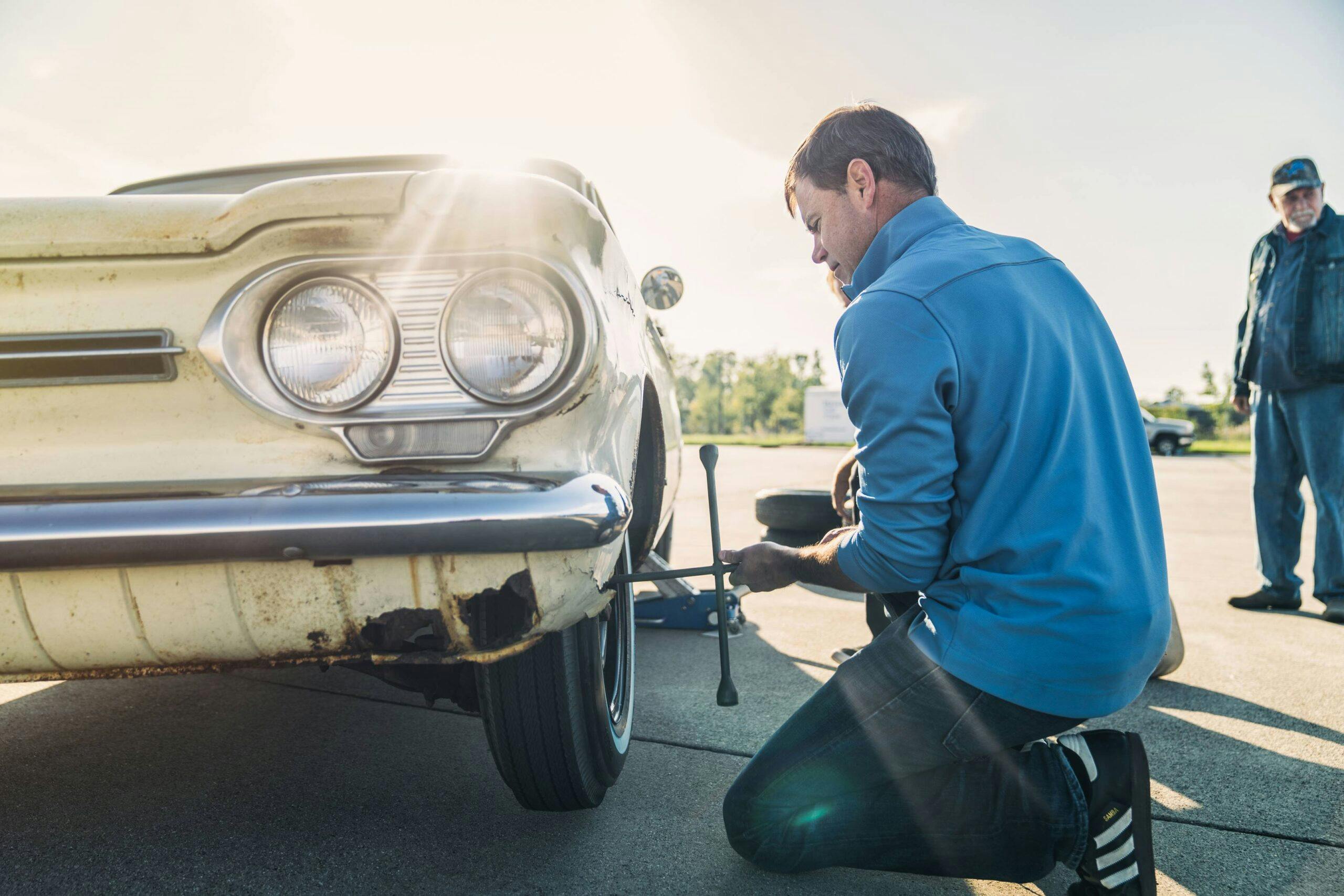
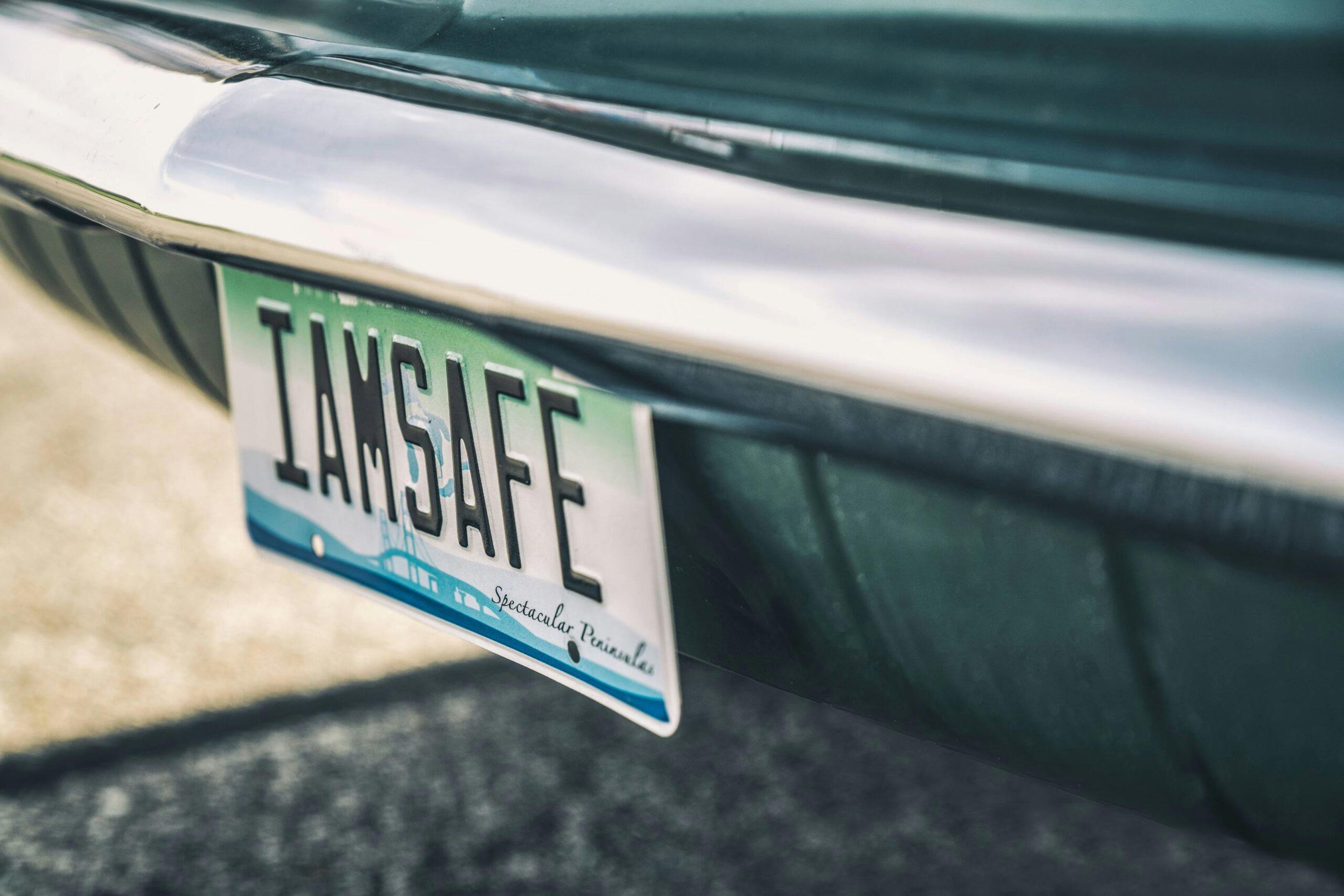
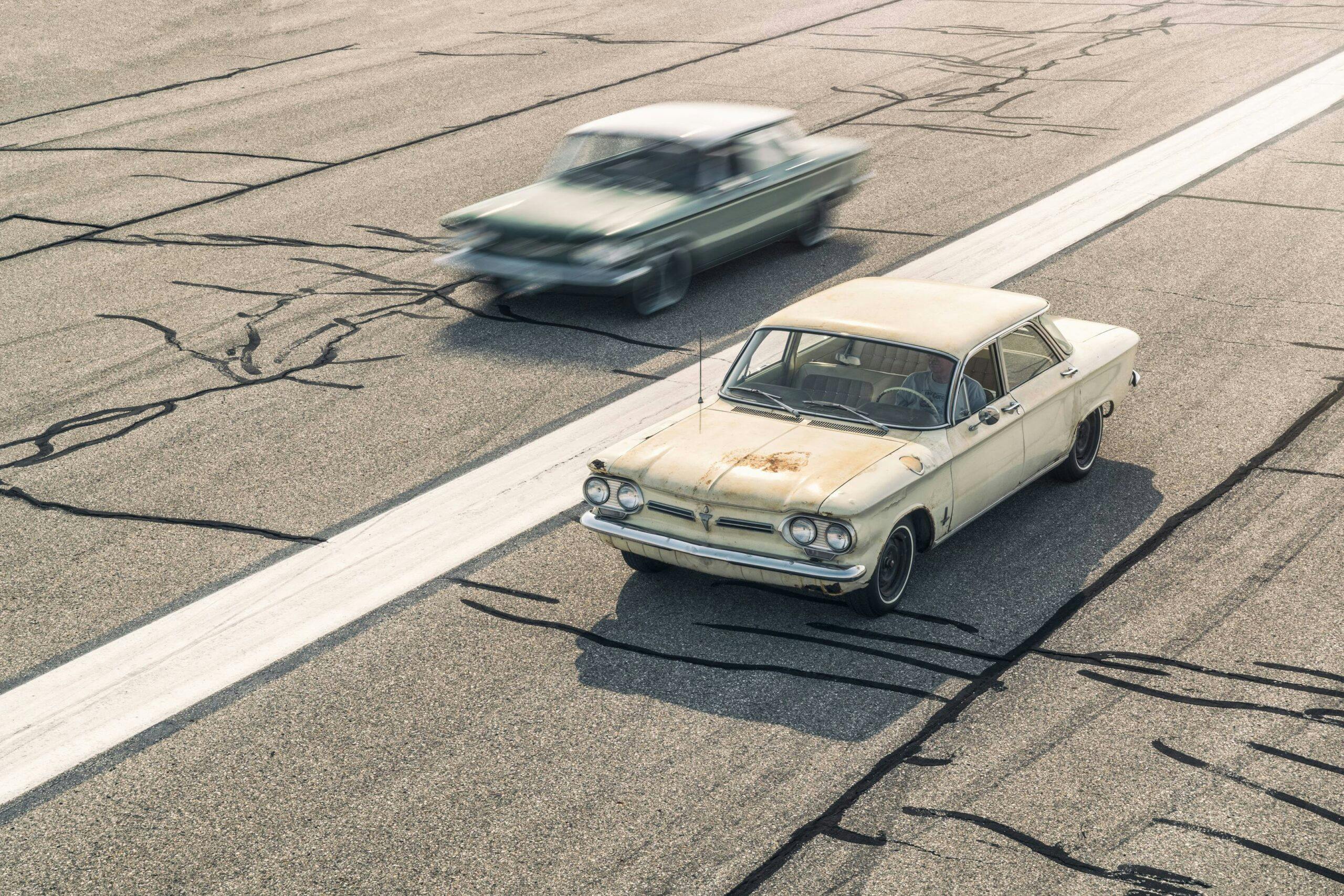

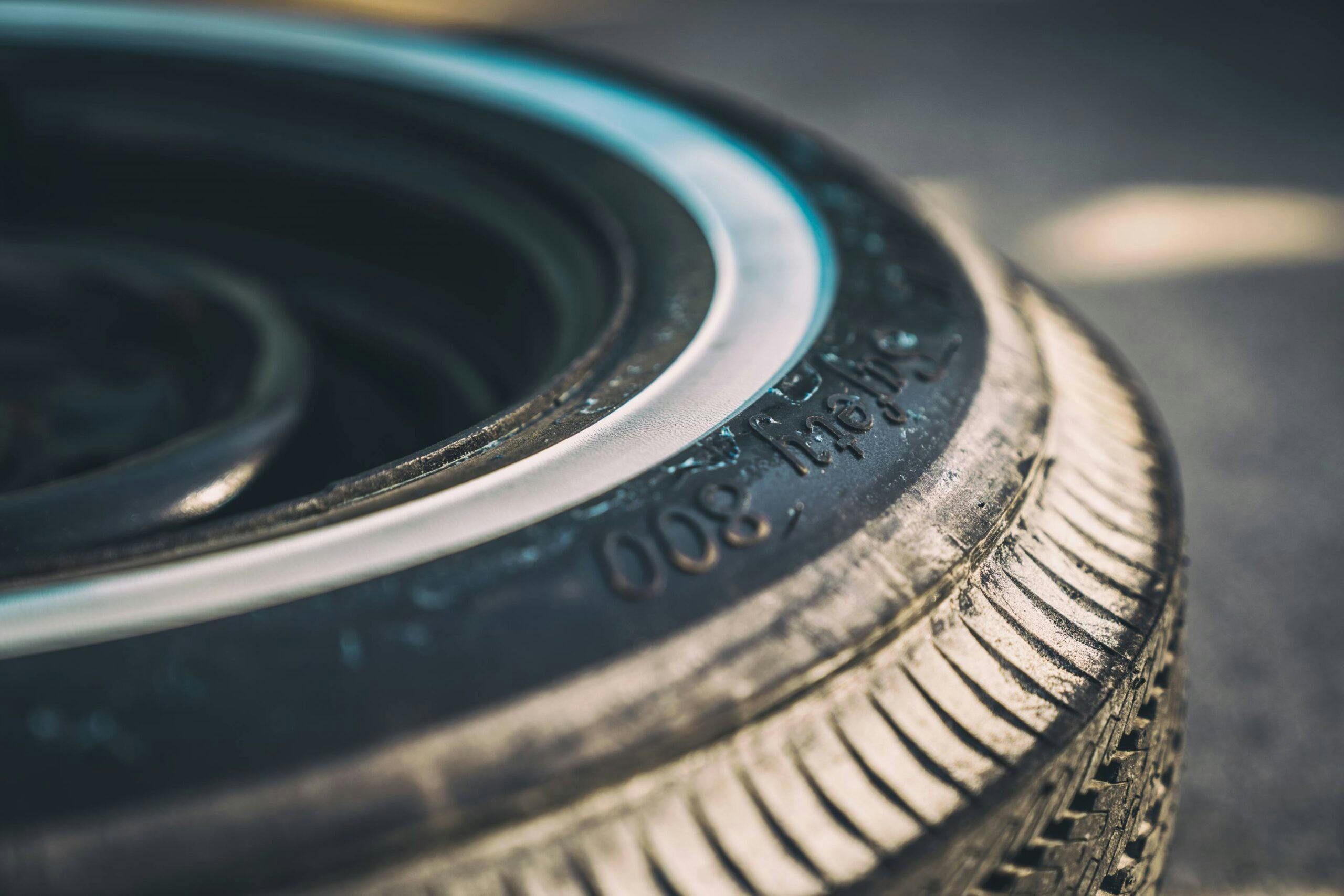


Most of what Nader said about car safety at the time was spot on–However- I can tell you confidently, that the Corvair was no more unsafe than any other car of that era– Try hard driving of a Falcon or Chevy 2 –(not to mention “Bug) of the day– Nader could have picked Any car of the day made anywhere & found Flaws —
I applaud Ralph Nader – he was truly a great American and I like so many others wouldn’t be alive today if it weren’t for him. It wasn’t just the Corvair – look at the momentous changes that happened in 1968 – padded dash boards, collapsing steering columns, high back seats or head rests are just the most obvious. There have been so many survivable auto accidents that would have been fatalities in 1967 or earlier cars but we fail to acknowledge that.
Years ago i worked with a former engineer from GM . He was a designer on the corvair project and worked on suspension designs. The original setup was to have double u-joint half shafts but the bean counter thought it was too expensive. So they went to the swing axles with only one u-joint for production. In the 1965 model year they upgraded to what was supposed to be the original set. He also told me about driving the 1957 Corvette SS mule that became the 1959 Sting Ray concept car.
I was driving my mothers 4 door corvair to school for the first time. While leaving the schools My friends in front were driving a 57 t bird and a healy sprite. We went bouncing into a corner and I flipped the corvair. Remember sitting on the top upside down sliding to a stop. Stood outside the car unhurt as all the kids went by on the buses. Mom took away my license for a few months.
As someone who has owned 3 Corvairs, (6 total in my family) I’m more than a little familiar with this story. First, Ralph Nader, like all socialists (and that’s what he was–he ran for president several times as an ultra-left wing radical,) he thought he had the right to tell people what kind of car to drive. (I’ve actually seen photos of him riding in Corvairs, not knowing what they were. He started what eventually became Consumer Reports, and I’m sure many of you remember their attempts to kill the VW Beetle, Jeep CJ5 and CJ7, Suzuki Samurai and Isuzu Trooper (until they got exposed for hiring a professional stunt driver who was paid to roll the Trooper!) The truth is, GM sued Nader over “Unsafe at Any Speed” and won, at which point Nader was forced to stop printing of the book and recall all unsold copies. This is why the only books you see now are almost always in the hands of a Corvair owner, as a final one-finger salute to Nader. Remember that Detroit was experimenting with new designs in the late 50s, many of which did not survive. The GTO and the Mustang opened a new chapter in American automotive evolution, but they didn’t kill the Corvair; nor did Nader. What really killed the Corvair was the cost of production. Nearly 70% of the parts used to build a Corvair were unique to the Corvair, which made it very expensive to produce. GM was known for its parts interchangeability and economy of scale, purchasing parts in massive quantities to bring the cost down. Chevrolet would have needed to sell almost 10 times as many Corvairs as they did to make a profit. The Corvair, like the Beta video tape cartridge, was a good idea at the wrong time.
p.s. Rear-engined air-cooled cars were not uncommon in Europe (Porsche 911) or America (remember the Tucker?) in the mid twentieth century.
The angles those tires are hanging at when in the air is not confidence inspiring. Still I do see why the average driver would have had an issue with that kind of behavior. I still love the Corvair.
In 1970 my brother and I shared a 1961 Corvair four door automatic in high school. We read Nader’s book and then, as teenagers do, set out to see what would happen.
We tried our hardest to flip the car with one person or ten. Yes ten, with guys and girls flying around inside we couldn’t get it to flip.
We had lots of fun with it until the rear motor mounts broke and the engine fell out while I was driving it. Dad said it time for a newer car and sold the Corvair.
So in my mind we proved Ralph wrong. 😉